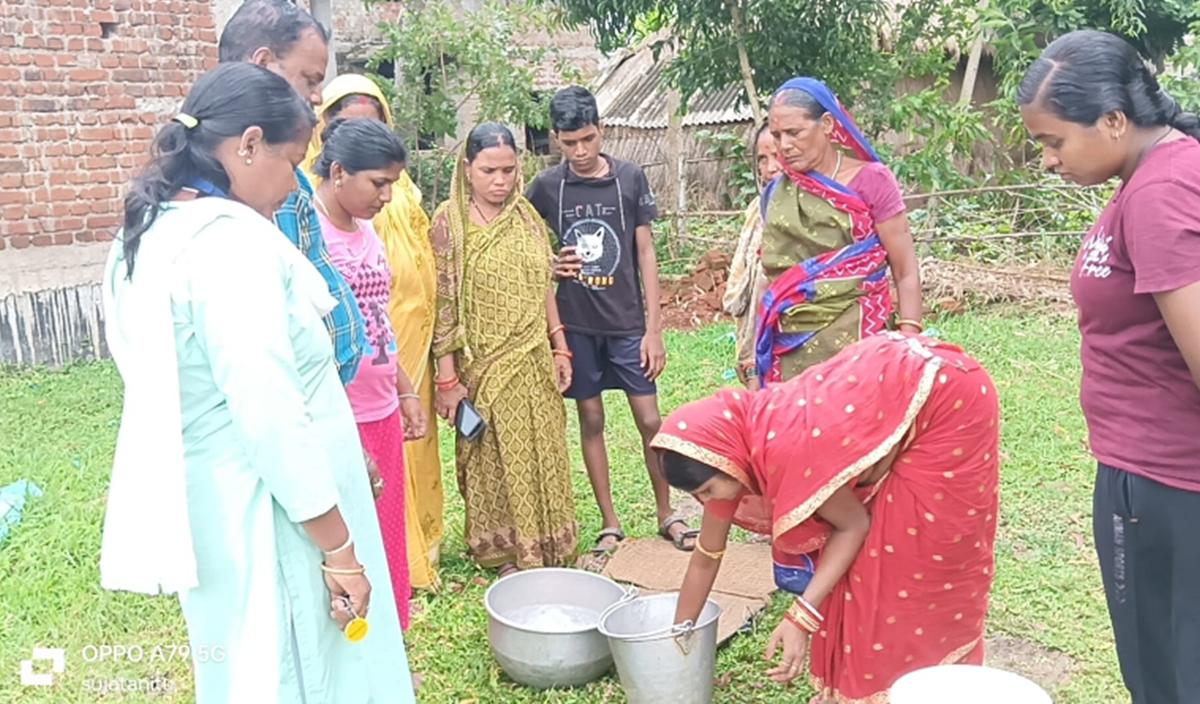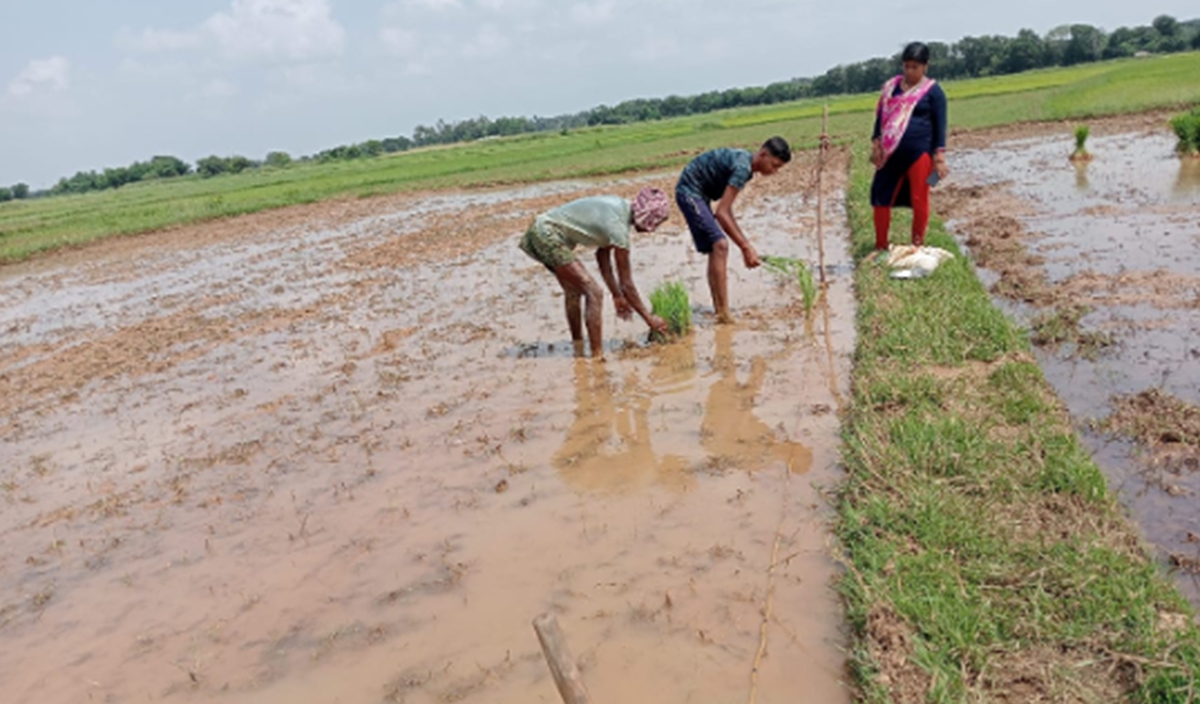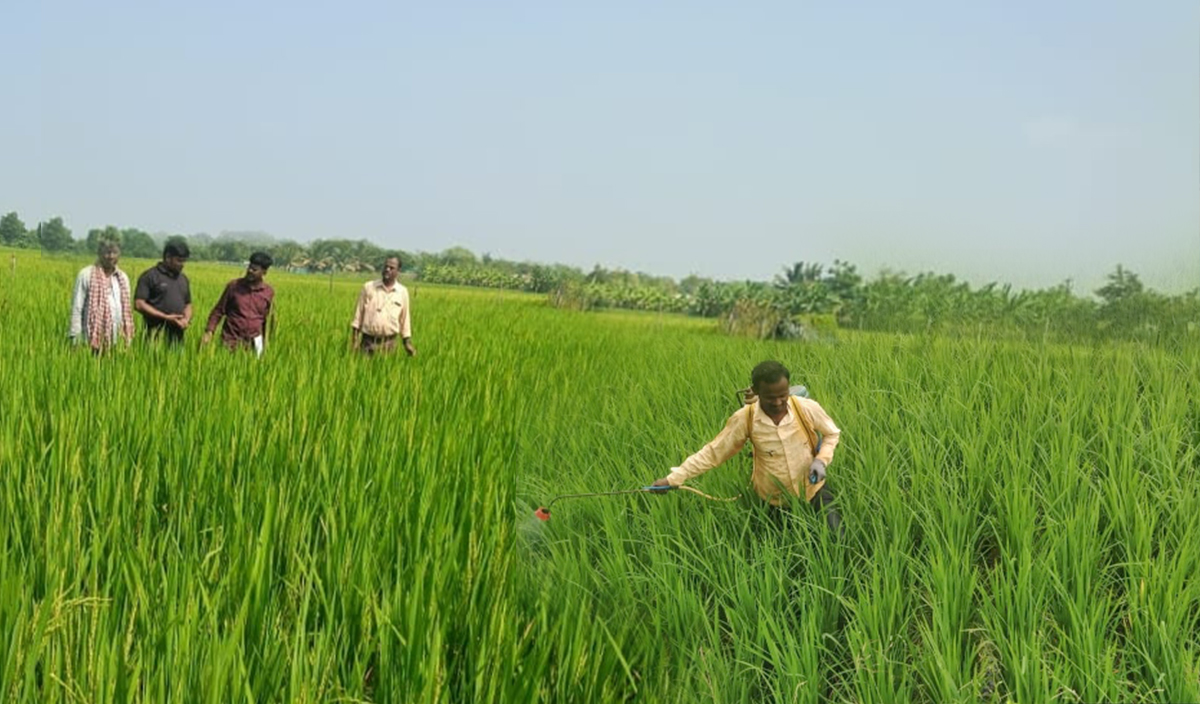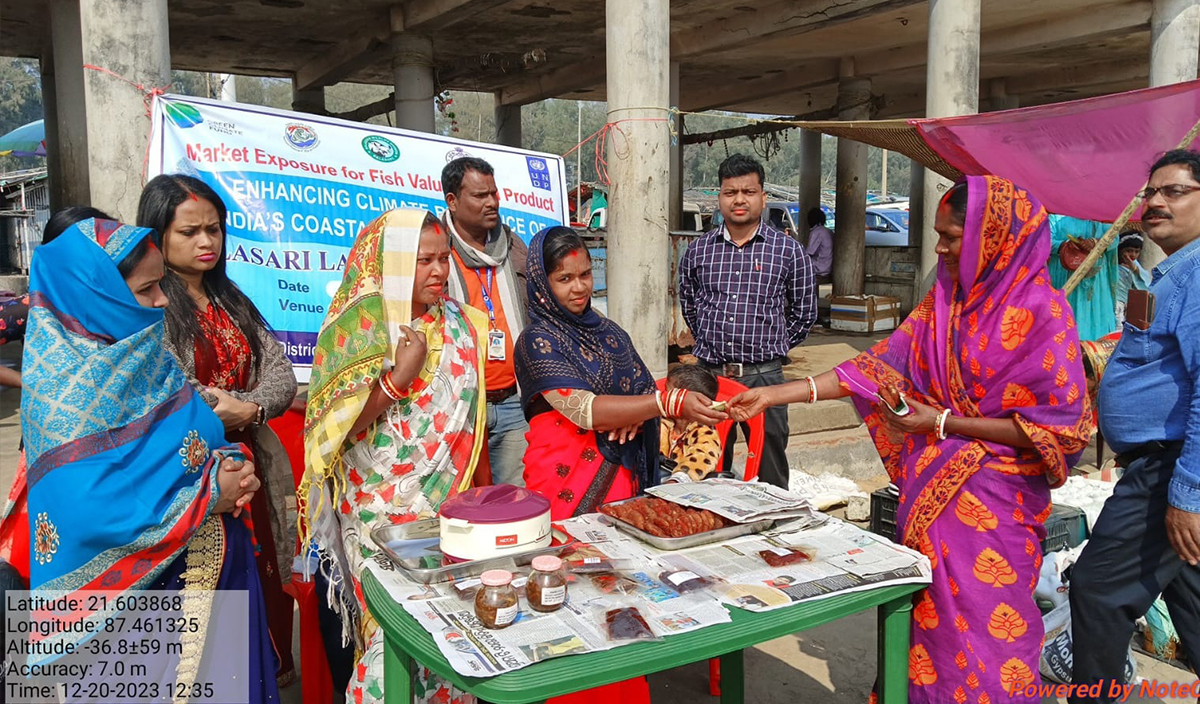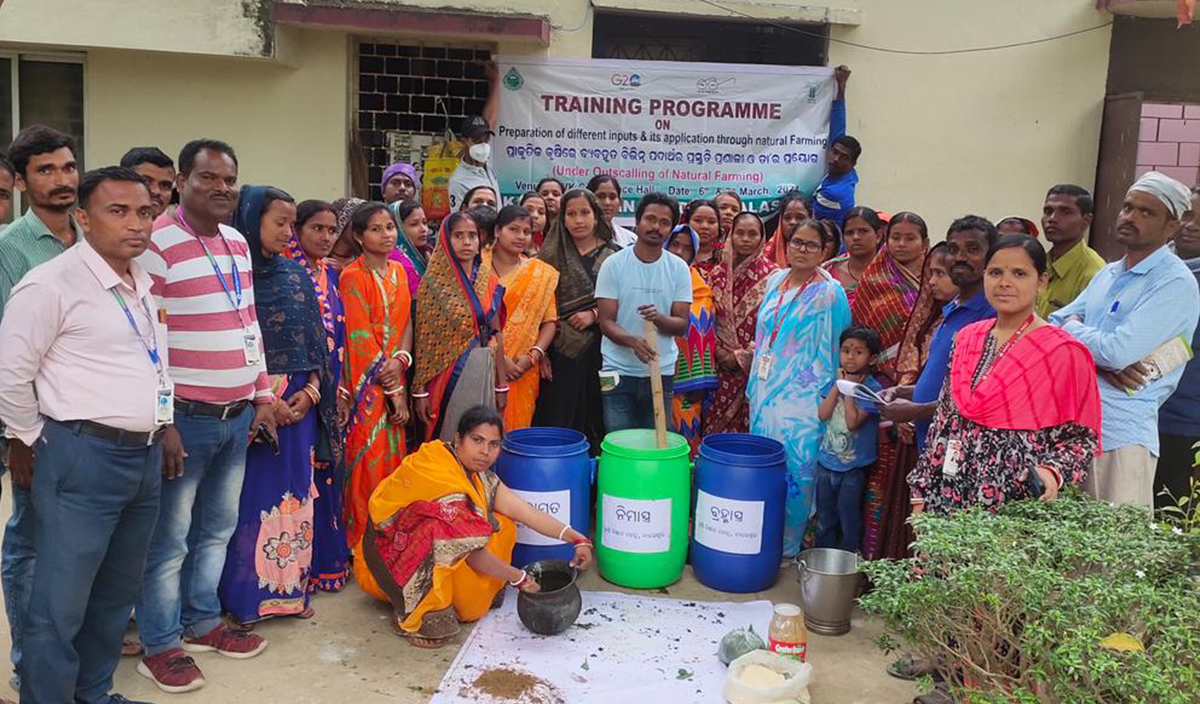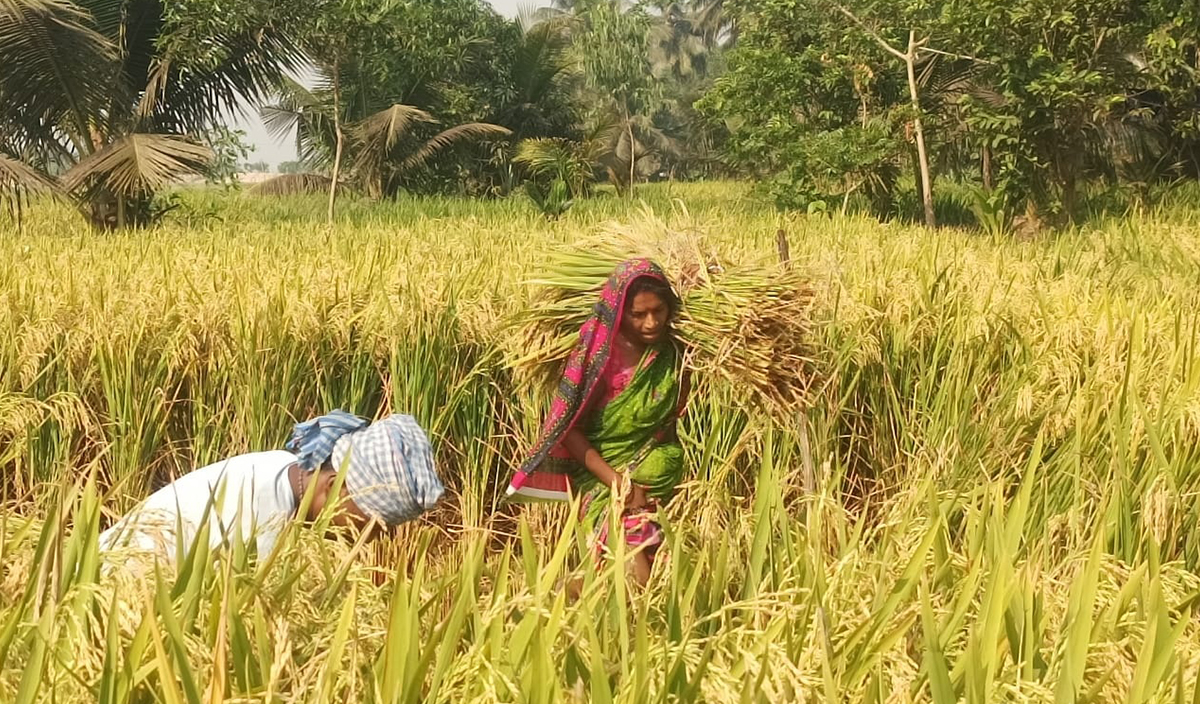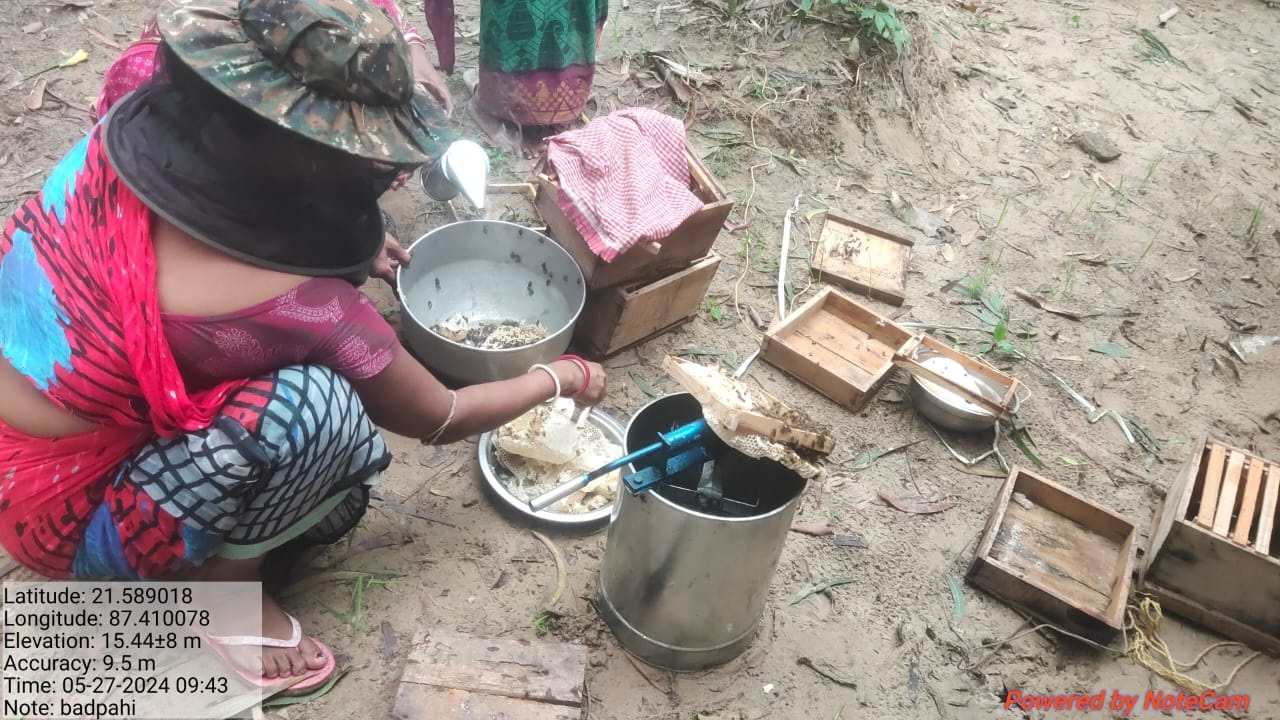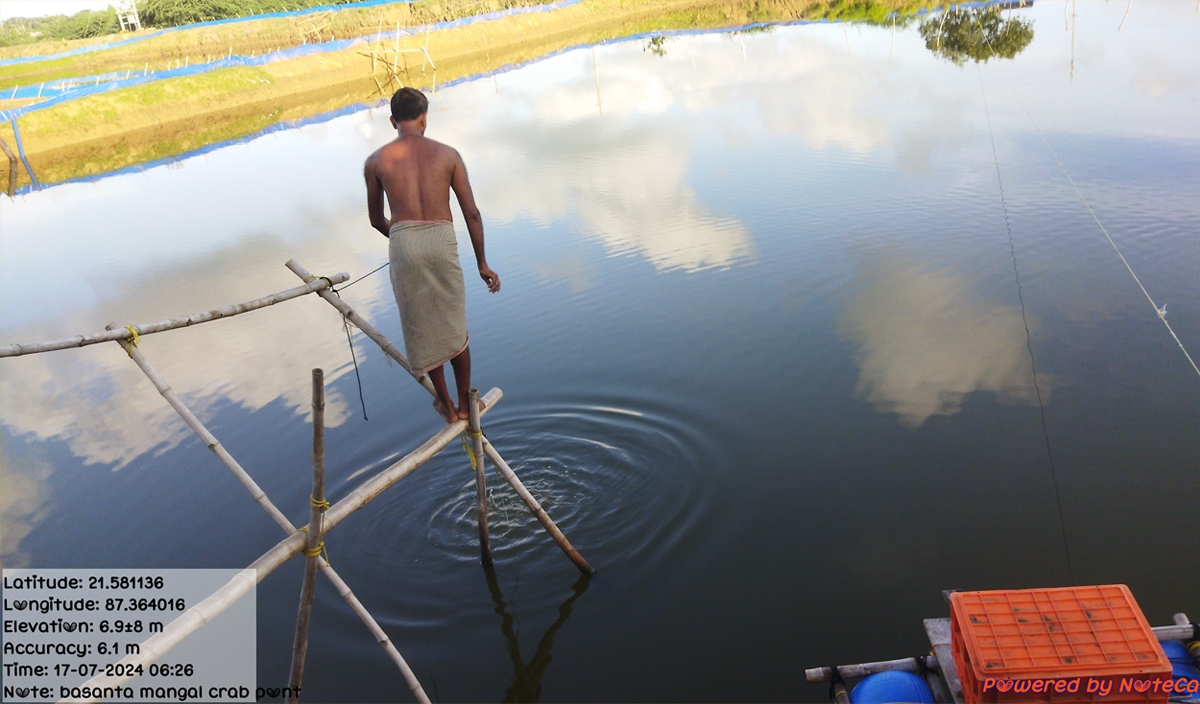Azolla’s Impact on Livelihoods: The Bold Steps of Angura Maity of Chanrakolla
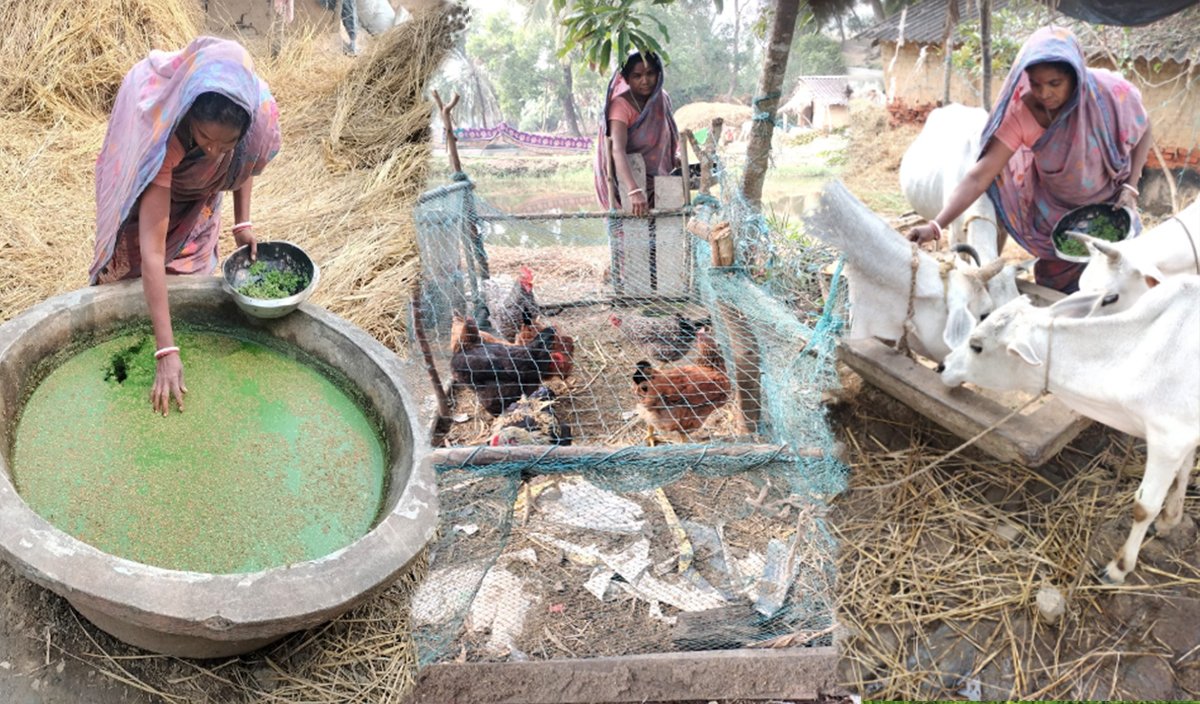
Chanrakolla is a coastal village located in the scenic Bhitarkanika region of Kendrapada district in the state of Odisha, where farming and animal husbandry had become increasingly challenging due to salinization of water bodies, natural calamities regularly occurring, and rampant use of chemical fertilizers. These difficulties gave rise to innumerable ecological issues and made it impossible for families to earn a living. It is in this backdrop that Ms. Angura Maity, a housewife, found a glimmer of hope through Azolla culture which she perceives can significantly transform her family’s future. Ms. Angura culture.
In quest of Change
The feeding cost of animals has increased over the years which has been a major source of worry for many women in Chanrakolla and directly affects the economic conditions of the family. The salinity of water sources also hindered her capacity to cultivate fodder for her livestock. When Ms. Angura learned about the ECRICC project funded by the Department of Forest, Environment and Climate Change and executed by Nature’s Club, she grasped the prospects of Azolla Culture being in her family's benefit.
At first, she was apprehensive about this new approach. With some effort and training from climate champion Manju Maity, Angura was encouraged to give Azolla cultivation a shot. She started cultivating Azolla in small at home with the hope that it might alleviate the cost burden of animal feeds.
Changing Lives Through the Use of Azolla
Angura and her family were able to lower their feed costs significantly as Azolla, a very nutritious and fast-growing aquatic fern, can be grown at home and makes excellent cattle and poultry feed. Thanks to the ECRICC project, she was able to learn how to prepare and maintain the tanks so that she would be able to domesticate Azolla, and she was able to it incorporate it into her daily routine.
Angura received training and support from the project, which taught her the fundamentals of Azolla culture and how it benefits livestock and crop production. In addition, Azolla is a great organic fertilizer and increases soil fertility in her small garden.
The Results
-
Economic Benefits
Azolla culture enabled Angura’s household to devise a feasible approach towards feeding their livestock. She saved roughly ₹525 every month on feed which made her household expenditures much more manageable. -
Sustainability
By using Azolla as an alternative to chemical fertilizers and expensive feed, Angura was able to reduce the harmful chemical inputs into her community. Furthermore, the Azolla helped in the restoration of soil health, enhancing her agricultural sustainability. -
Community Adoption
Following the promising impacts that Angura Maity's family Achieved, other villagers became willing to adopt Azolla culture. The Success Story increased curiosity, participation, and knowledge about the practice and its benefits in the community.
Angura’s Reflection
Angura Maity’s transformation was not only financial, but also deeply personal. With other family members relying on livestock for extra income, the livelihood was being threatened by the rising costs of feeding the animals. With her adopting Azolla culture, she was able to cut down on feed expenses while being able to give her livestock ample nutritious feed.
“Azolla is easy to grow, eco-friendly, and helps us save money while allowing us to constantly provide high-quality feed to our livestock. I encourage people in my community to use Azolla. It has greatly assisted in my life as well,” Angura states, illustrating the changes this new technique has brought in her life.
Overcoming Challenges
The salinity of the water bodies made Angura’s main concern the growing of Azolla. To tackle this, we encouraged small tank cultivation which is salt water tolerant and is sustainable with very limited water resources. With a great deal of hand-holding, she was able to deal with this problem effectively.
A Model for Sustainable Livelihoods
Chanrakolla village is well known for the benefits associated with Azolla culture as it serves as a reminder that as well as creating a community resilience and well-being, simple sustainable techniques have powerful impacts. Azolla culture enhances self-reliance as well as financial stability of households all over the region by lowering costs of livestock feed, improving soil quality, and enhancing environmentally friendly practices.
The journey of Angura Maity stands as an inspiring story in the sphere of sustainable agriculture. With the support of the ECRICC project, she has managed to not only enhance her family’s means of livelihoods but also has become an ideal for others in her village. Simple, nature-based solutions can pave a way for a sustainable future, and her story is proof of that.


